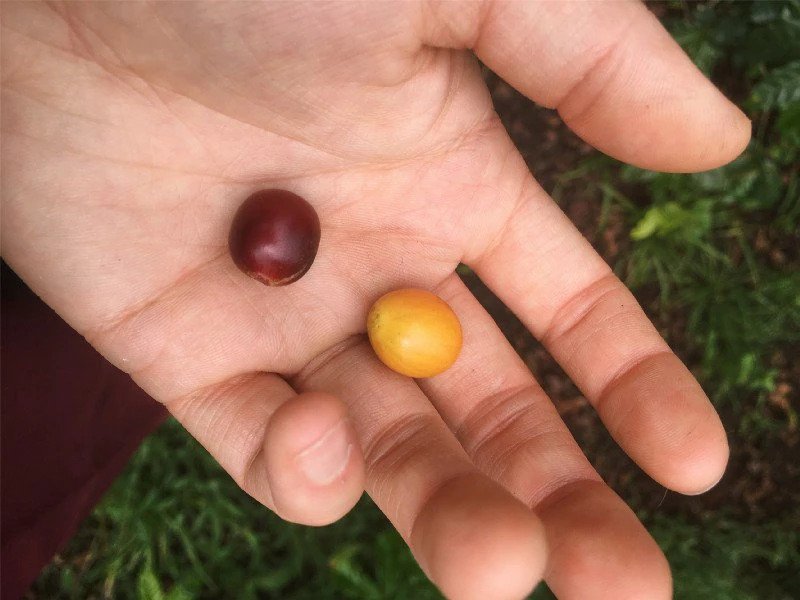
This is Part 2 in a series of educational posts, designed for the consumer and/or folx building a foundation in coffee. I wrote these for work, but you get the uncensored versions here lol. Hope you enjoy!
(Links to all posts in the series at the end)
PS I wrote this post right after I saw coffee shrubs irl for the first time in Colombia – and all the photos are from that trip
Coffee is a berry seed.
The berries — usually called cherries — grow in mountainous regions across the world’s equatorial belt. This winter, I visited coffee farms for the first time, and took lots of photos to share. In this post, we’ll explore foundational facts about the coffee plant.

Have you ever heard a coffee described as floral?
That descriptor seemed odd to me when I first heard it, but really it’s not so strange. The coffee fruit is preceded by a beautiful, creamy white flower. It smells like jasmine, and is self-pollinating.
Coffee cherries grow on densely foliated shrubs. If I squint, a flowering coffee shrub reminds me of the rhododendron bushes in my home state of Washington. The range of possible height and circumference approximates a rhody bush, too.

There are two main species of coffee: Coffea Canephora (commonly called Robusta) and Coffea Arabica.
Robusta, the hardier and higher-yielding species, produces a more bitter-tasting coffee. For this reason it’s a popular choice for milky and sweet drinks, such as Vietnamese phin, where the bitterness creates complexity and balance. Robusta is also commonly used in instant coffees. Arabica is more difficult to grow and is a lower-yielding crop. But its seeds contain twice as many sugars and fats. This means a sweeter and less bitter flavor — making Arabica the go-to for the specialty coffee industry, where fruitier profiles are popular.
Picture the produce section at your grocery store.
See the oranges and apples? They are different species, like Robusta and Arabica.
Now, picture only the apple section. Within one species – apple – there are different varieties. Gala, Fuji, Honeycrisp (the best one), Red Delicious (the obvious worst lol, shoutout to Kristina Jackson).
Coffee is the same way — within the Arabica species, there are many varieties.
Their leaves and fruit are all distinct in appearance, and they have slightly different flavors. Two different varieties grown on the same farm, under identical conditions, will taste similar but definitely distinct from one another.
Each coffee-growing country prefers a specific handful of Arabica varieties. In Colombia, you’ll commonly see Caturra, Castillo, Colombia, & Bourbon. Most varieties ripen to dark red, but some are ripe when yellow.

The cherry’s glossy skin contains a small portion of flesh, which has a flavor and texture similar to white grape or lychee.
Sometimes it tastes like watermelon, or flowers, or honey, differing based on variety and environmental factors – just like the coffee itself. Dried coffee cherries are called cascara, and they can be brewed into a sweet, caffeinated infusion.
At the center of each coffee cherry are two large, pale seeds. You can pop them out of the fruit by squeezing — kind of like edamame at a Japanese restaurant. After a lot of processing, these seeds become the brown roasted “beans” we know as coffee. And that covers the most important botanical basics! Coffee is a berry seed that grows on a cute shrub. There infinite details and rabbit holes to go down here, but now you have a more solid foundation than me when I’d been a barista for a year!
If you’re interested in learning more, check out the other posts in this series:
Part 4: OK BUT HOW DO YOU GET THE SEEDS OUT?
Questions? DM me! I’m on Instagram: @umeshiso_

